On The Crossroads of Hunan, Hubei and Jiangxi
Monday, August 24, 2009
 Jiujiang, Jiangxi, China
Jiujiang, Jiangxi, China
Hey Hey and a Big G'Day toya,
This beautiful evening finds me lazing about in the city of Jiujiang which is situated near the northern border of Jiangxi Province. It borders the Yangtze River to the north, Poyang Lake to the east and picturesque Mt. Lushan to the south. Jiujiang in Chinese means 'nine rivers'. Due to its location at the geographical intersection of Hunan, Hubei and Jiangxi Provinces, Jiujiang has always been an strategically important city as it is virtually at the center of so many bodies of water, the city is one of the four largest rice markets and one of the three largest tea markets in China, yet it remains almost totally unknown due to it being so close to the famous Mount Lushan.
With a history of over two thousand two hundred years, Jiujiang is a very leafy and attractive city boasting grand mountains and numerous waterways. Cultural relics of Buddhism, Taoism, Islam and Confucianism can be found on nearby Mt. Lushan. The mountain also features captivating rock formations, natural springs, temples and stone inscriptions and most of its ninety nine peaks rise over one thousand meters above sea level.
I had actually never heard of this city before and the only reason I came here was due to the fact that it is supposed to me much cheaper to stay here than on top of Mount Lu Shan. So yesterday when I woke I decided that sometime in the next few days I would head to Lushan where I would end the 2009 Summer Beers N Noodles Adventure. After packing I headed to the Anyi long distance bus station where I was going to grab the next bus back to Nanchang City and stay two nights. Whilst I was in line waiting for my ticket I heard the city name Jiujiang being yelled and a bus horn beep beep beeping over and over again.
Which in China means; Oi! We are about to leave, if you’re coming GET ON NOW!
If you not coming it doesn’t matter I will continue to beep this horn over and over anyhow!
So I figured why not just head to Jiujiang city this very morning and skip Nanchang altogether.
The bus was tiny, without air conditioning and came complete with several chickens and pigeons all wrapped in the orange net bags we purchase our oranges in. The journey to Jiujiang was beautiful and took well over five hours through some splendid rural country side full of mountains, rice fields and rivers during which the chickens and pigeons almost covered the bus floor with thankfully non smelly droppings. All the while everyone and everything in the bus was almost bone shatteringly thrown around due to the very bad state of the roads.
The journey should take around three and a half hours.
But we broke down and had to wait for parts from a town somewhere near by.
Thankfully when we arrived in Jiujiang a uni-student came racing from out of no where to see if I needed help. He was such a happy person and as we spoke he was bouncing from foot to foot telling me how great it was that he missed his first bus as it allowed him to talk to a foreigner for the first time. He had been visiting his grandmother in a city near by and was just passing through and would board the bus I just departed and head an hour the way I had just came to his home village. Before leaving he told me which bus to grab to take me to the inner city bus station from which I could catch a public bus to Lu Shan.
For those who want to journey from Anyi town to Jiujiang city, when you arrive you can board any of these buses from the tiny bus station your bus arrives at to the larger and more important city bus station (Bus Numbers 101, 102, 103, 104 or 105). After you pass the lake watch out for a Mc Donald’s on your right hand side and the bus station is soon after.
The only information I had on Jiujiang was this one sentence from the Lonely Planet 'many travelers arrive in Lushan from either Nanchang or Jiujiang and that buses leave regularly from Jiujiang for Lushan’ and that’s about as much as you need to know for your Lushan adventure. But the city I was greeted with last night and that which I explored today was one I never expected from those two short and uninformative sentences offered in the Lonely Planet. On my journey from the small bus station to the large bus station last night I found myself glued to the bus window as we slowly passed along the side of the huge inner city lake area.
Honestly I even grabbed my LP out again to make sure I hadn’t missed any information on this city.
When I arrived at the inner city bus station I grabbed some bus times to Lushan and then headed out to find a hotel along what I found to be the cities main street, Xunyang Lu. I checked out many hotel prices and they were extremely under my budget yet far better than many I had stayed in over the past two months. It is seriously almost impossible to pay more than 100Yuan for a good hotel in this city and most offer rooms with everything you need for around seventy to eighty Yuan.
My hotel is just across from the popular north eastern corner of the lake and after checking in I headed out for a long walk that I hoped would rejoin all my bones from the days bus journey. I had no idea how large the lake was and thought I would it would only take half and hour to an hour but I returned nearly four hours later. Of course it didn’t take the entire time to walk around the lake but I had dinner and found myself standing by the lake side wondering why so many people head to Hangzhou city to visit West Lake when right here there is a lake that is almost as beautiful.
It is also offered for next to nothing in cost comparison.
This morning I decided to spend the day in the lake area retracing the steps I took last night and from there where ever my sandals took me. It wasn’t until late in the afternoon that I actually found a map and where my hotel was located on it to my surprise I found that I was less than a good city block away from the Yangzi River. I actually had no idea at all that this city was located on banks of the mighty Yangzi River, so instead of heading to Lushan tomorrow I have decided to do what any normal person would do and that is to spend the day walking along the Yangzi River in search of what ever there is to be found.
Today though was such a wonderful day and one that came as such a surprise as the LP doesn’t even offer a simple short paragraph on what this city has to offer for example, a huge beautiful lake that is surrounded by parks, temples and even an old church. The cities streets are lined with huge leafy trees and small alleyways offering cheap eats can be found almost everywhere and for those who want to visit Lushan it is more than worth spending at least a day and a night here before moving on to the mountain.
You could easily do the lake area in the morning and from looking at the map you could easily do the river side sites in the afternoon. I’m not actually sure what they are yet but it looks like there are three pagodas (or something) on the map but they are all well within a short taxi ride or for those like me a nice afternoons walk.
This evening I spent a few hours walking around the area between Xunyang Lu and the river area. Here I found a very busy shopping mall full of all the latest fashion stores etc. Today at the southern end of the lake near train station I found a Wal-Mart and the cities beautiful open air swimming pools.
Below is some information I found and put together on what I found today during my Lake Adventure.
Gantang Lake
During the Tang Dynasty (AD618-907), Gantang Lake was known as Jingxing Lake and was bisected by a dike that was built to facilitate the transportation at that time. The divided lakes are now separately called South Lake to the east of the dike and Gantang Lake in the west. In the lake's center stands a small pavilion and Buddhist Temple and after passing it by twice I found it to be closed to the public on both occasions.
Gantang Lake was divided into two by a dyke and bridge built in AD821 during the Tang dynasty. Sixian Bridge, now enlarged, still stands on the causeway which one crosses to reach Yangyue Pavilion on the low hill overlooking the lake. It is well stocked with silver and grass carp, and seagulls skim its surface. lt is said that during the Three Kingdoms period (AD220-265) the Eastern Wu general, Zhou Yu, inspected his warships from a reviewing platform on the Lake, trees of which remain.
Yanshui Pavilion
Linked to the shore by a zigzag bridge is the pretty Yanshui (Misty Water) Pavilion. A pavilion was first built here in the Tang dynasty (AD618-907) by the poet Bai Juyi during his unhappy posting in Jiujiang. It was named the Drenched Moon Pavilion after a line from one of his poems 'Bidding farewell I saw the moon drenched by the river.'
In the Northern Song period (AD960--1127) a highly regarded Neo-Confucian philosopher, Zhou Dun, taught in Jiujiang and his son built a pavilion on the lake to his father's memory, calling it Yanshui Pavilion. The present island pavilion dates from the late Qing period (AD1644--1911). One small hall is dedicated to BaiJuyi, other rooms display local archaeological discoveries. The Yanshui Pavilion is a series of buildings connected by corridors. These ancient buildings in the pavilion are Chuangting Hall, Cuichaoxian Pavillion, Yanhui Pavillion, Wuxian Pavilion, etc.
The city's antiques store is also located here.
Nengren Temple
You can find the Nangren Temple on the east side of the lake or if you cross the lake from the Buddhist Temple you will find that the road turns into Gantang Lu. At the next intersection you will find a small Church that of course is closed to the public (like most Churches are in China). If you turn right here into Yuliang Lu and walk a short distance you will find a leafy round about with a hospital on one side and the Nangren temple on the other.
The Nengren Temple was first built in the Southern Dynasty (AD420-589) and went through many changes and repairs through the dynasties that followed. Most of the temples present structures were repaired or built in the Qing Dynasty (AD1644-1911). The temple covers an area of three thousand square meters and is the largest historical structure in Jiujiang City and it is in fact one of the major protected temples in China. Visitors can find grand halls and statues of Buddha, guardians, warriors as well as relics and scriptures of Buddhism.
The temple has many things to see which include the awesome Great Victory Pagoda
The Great Victory Pagoda was built in the Tang Dynasty (AD618-907), underwent repairs in the Ming (AD1368-1644) and Qing dynasties. The pagoda, with its west-facing gate, is a seven storey hexagonal structure made of bricks and stones and is forty three meters high. From the second story, there is a door on each side and inside the pagoda there is a brick staircase that goes to the top and from what I can gather it is the only one of its kind remaining in China.
Next to the Great Victory Pagoda is the ‘Stone Boat’ which is a big concave stone which resembles a boat. It is five meters long and one meter wide. On the boat sits an Iron Buddha and legend has it that during the Song Dynasty (AD960-1279) a monk dreamed about an iron Buddha ferrying across the river in a stone boat. Unfortunately, this iron Buddha was destroyed and the existing one is made of concrete.
The Qing halls found in this temple are the oldest buildings left in Jiujiang city and from what I can gather three or four monks and several nuns continue to tend the temple.
Beers N Noodles toya…..shane
PS: during the days adventures around the lake I found a wall that had a heap of flags from around the world and I can only guess that they are the cities ‘Sister Cities’ and one of them was a flag of Australia with the name Baw Baw Shire written under it. How wonderful it was to find that as the Baw Baw Shire is not far from my home town.
___________________________________________________________________________
The soundtrack to this entry was by Suzi Quatro
The album was ‘The Best Of’. For all the younger readers who don’t know who Suzi Q is,
Mate she is more than worth a short visit to your local CD store or download site. She rocks!
____________________________________________________________________________
Other Entries

 Jiujiang, Jiangxi, China
Jiujiang, Jiangxi, China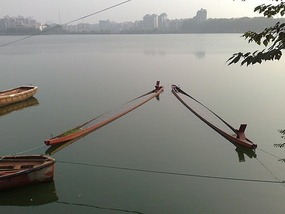
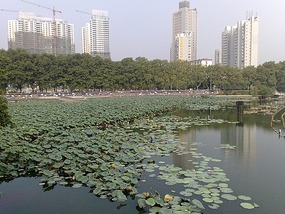
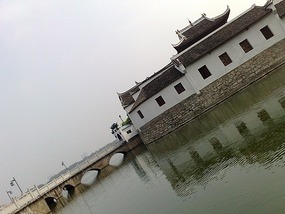
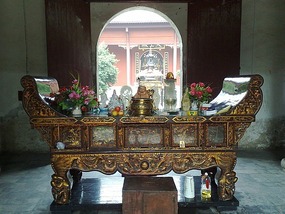
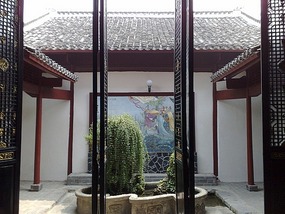
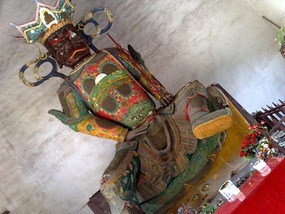
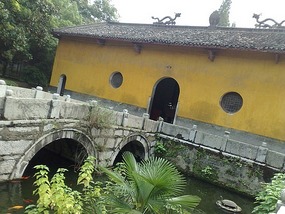
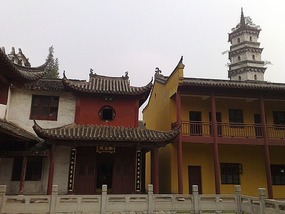
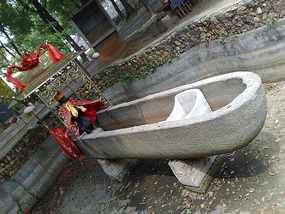
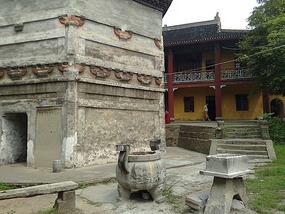
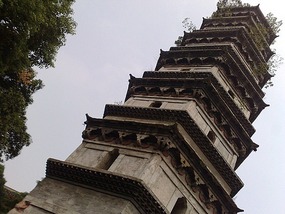
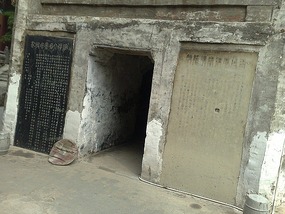
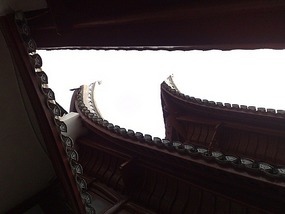
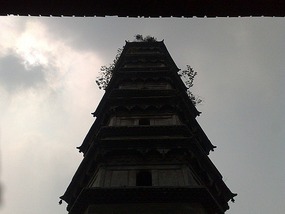


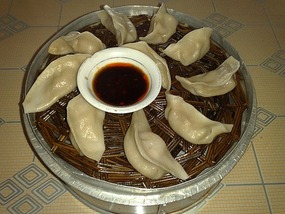
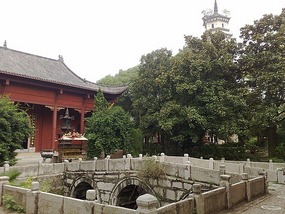
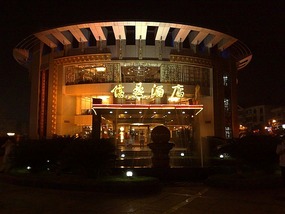
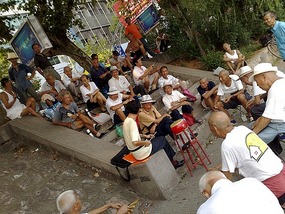
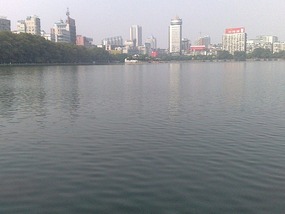
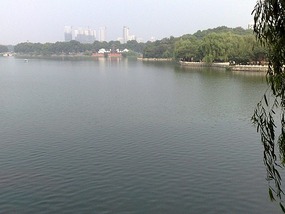
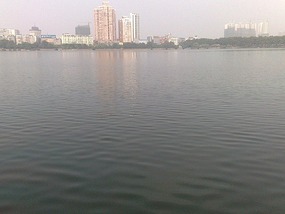
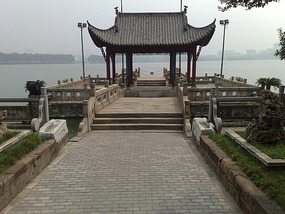
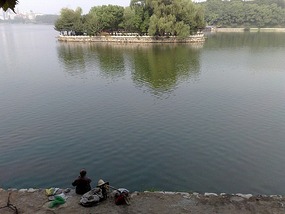
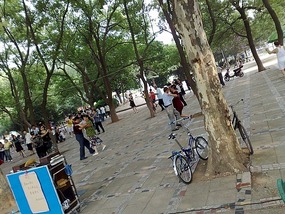
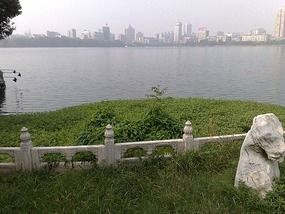
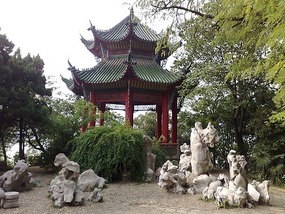
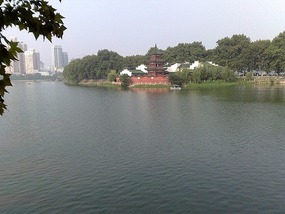
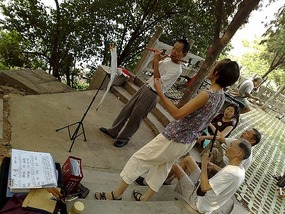
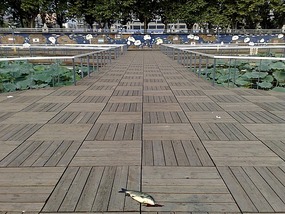
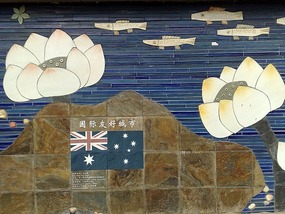
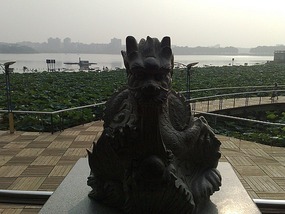
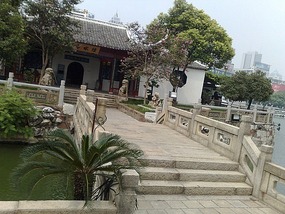
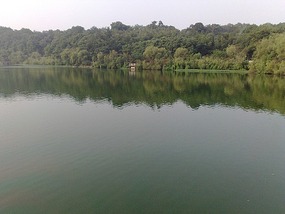
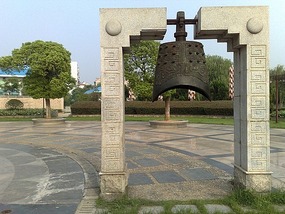
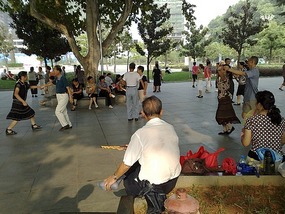
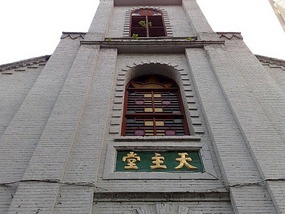
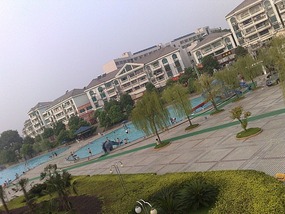
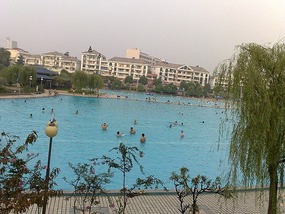
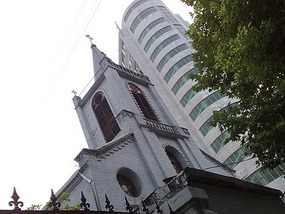

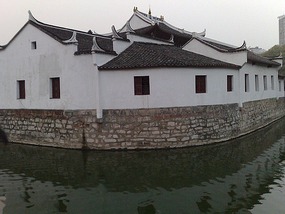

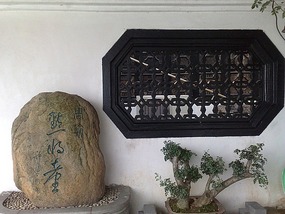
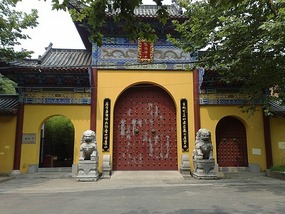
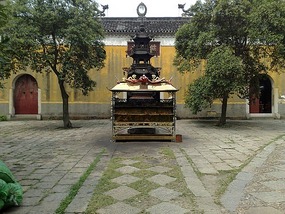
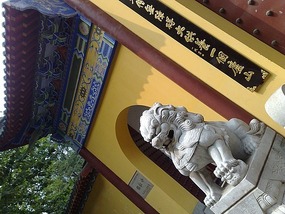

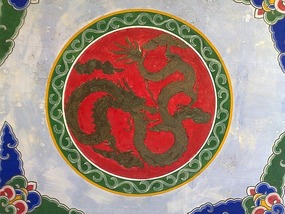

2025-05-22